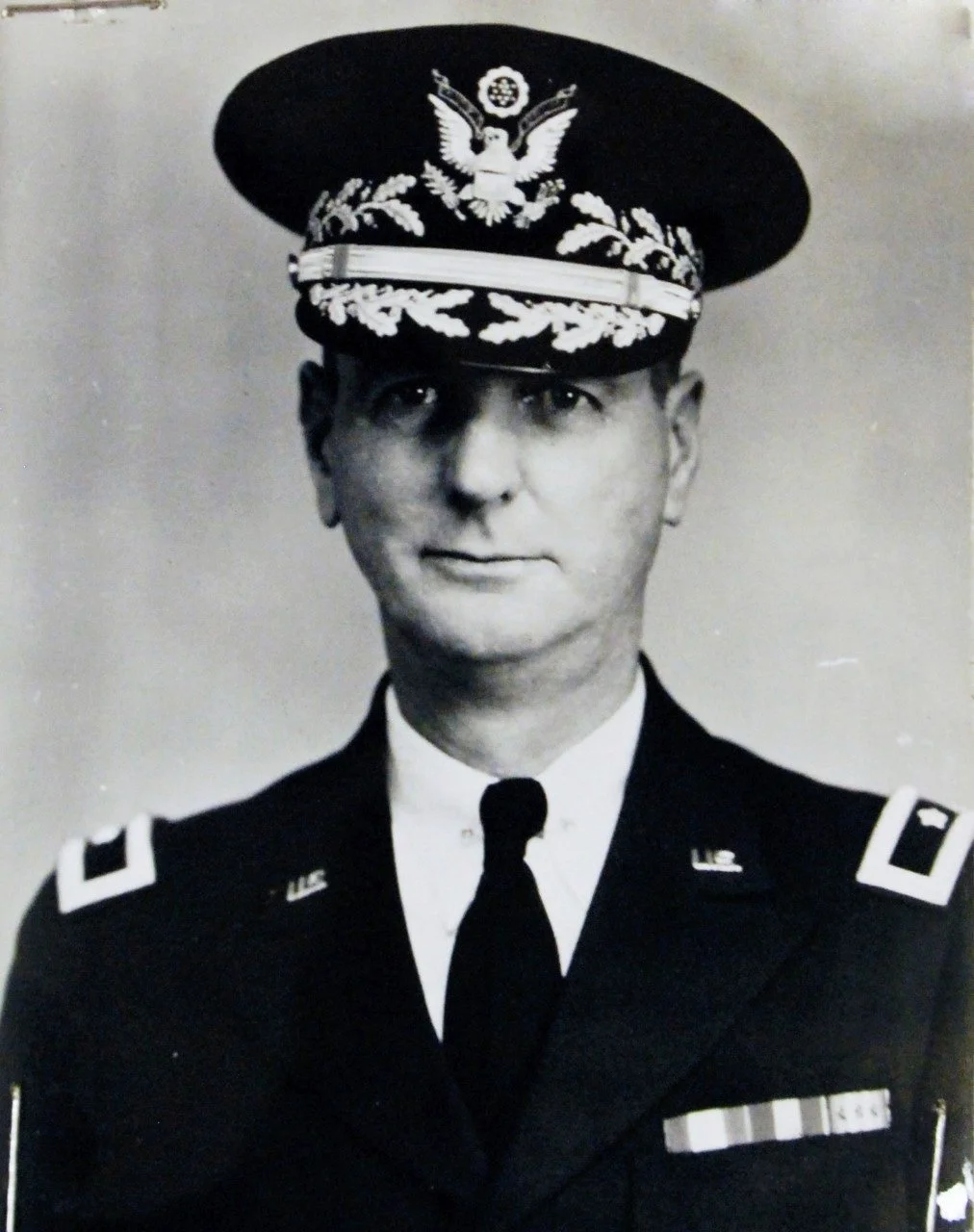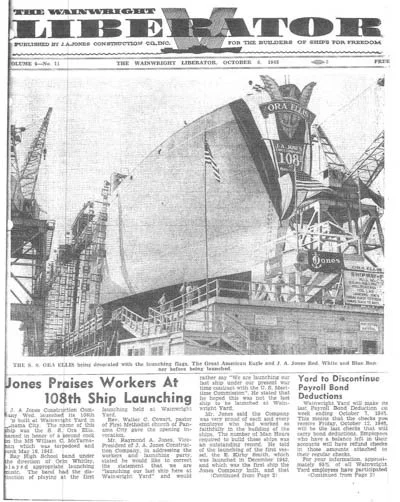
Here’s a history lesson about
Panama City’s Role in WWII

The Liberty Ship
So what’s a Liberty Ship and how did Panama City help kick Hitler’s butt? Well, we built ugly ships to carry resources overseas and we did it in record time.
On April 7, 1942, the J. A. Jones Company of Charlotte, North Carolina was contracted to build a shipyard in Panama City, Florida. Their mission, to produce Liberty Cargo Ships for the military. A site at Dyers Point just off U.S. 98 at the southwest boundary of the City of Panama City with almost 5,000 feet on St. Andrew Bay was selected and construction began immediately. The shipyard was completed in 79 days which gives you a sense of the can-do attitude of the U.S. during WWII.
It was named in honor of General Jonathan Wainwright who at the time was a POW being held by the Japanese. He was later released and awarded the Medal of Honor for his courageous leadership during the fall of the Philippines.
When news got out about the new shipyard, the local population soared as our soldiers' wives, sisters, mothers, and fathers flooded in for good-paying jobs and to do their part for the war effort—their task was to build Liberty Ships. Slow but sturdy cargo vessels, dubbed the ‘ugly ducklings’ by President Franklin Roosevelt, were built for durability, not beauty.
The idea was brutally simple. Find a way to build thousands of cargo ships faster than Germany could ever hope to sink them. They were modeled after a British ship built in the 19th century with 10,000 tons of cargo capacity and powered by an antiquated steam engine. These ships were severely underpowered. If the Atlantic seas were rough enough and moving in the wrong direction, a Liberty might not be able to move forward at all.
Their defensive capabilities were also lacking. A 3-inch bow gun, a 5-inch stern gun, and a bit of anti-aircraft weaponry made them vulnerable to the German’s cutting-edge war machines. Their primary defense was bunching together into huge convoys and praying for a safe voyage. They were crewed by volunteer Merchant Marines and a dozen or so armed Navy guards. Of the nearly 3,000 Liberty ships built, 200 were lost to enemy action, weather and accidents.
In the first year of the Liberty Ship initiative, 18 shipyards across the country were each building one ship every 230 days. The average construction time eventually dropped to 42 days, with three new ships being launched each day in 1943.
This monumental task was accomplished because of two revolutionary steps. The first was to weld the ships together instead of riveting them together. Riveting is a slow process that requires a lot of skill and strength. Remember, the workforce in the U.S. at this time was not extremely skilled or physically strong. Welding was far easier to learn and less physically demanding.
The second revolutionary step was to bring assembly line logic to the shipbuilding industry. Instead of building a single ship from start to finish in a single location thousands of components would be manufactured at different locations and then brought to the shipyard for final assembly.
Shipyards would compete to see who could build a Liberty the fastest and the winner was the SS Robert E. Peary out of the Richmond shipyard in California. Workers had built it in four days, 15 hours, and 29 minutes — setting a record as the fastest ship ever built.
During WWII America constructed over 2700 Liberty cargo ships. Wainwright Shipyard located at what is now Port Panama City built over 100 of them and launched them into St. Andrews Bay.
These ugly and hastily built cargo ships were loaded to the brim and sent overseas to help the Allies win the war. The sheer number of Liberties on the ocean overwhelmed the Germans and ultimately helped to stop the Nazis from taking over the world.
Wainwright Shipyard closed in 1945 shortly after the war ended, but its impact on our town and the world has continued to this day. Cheers to Liberty!






